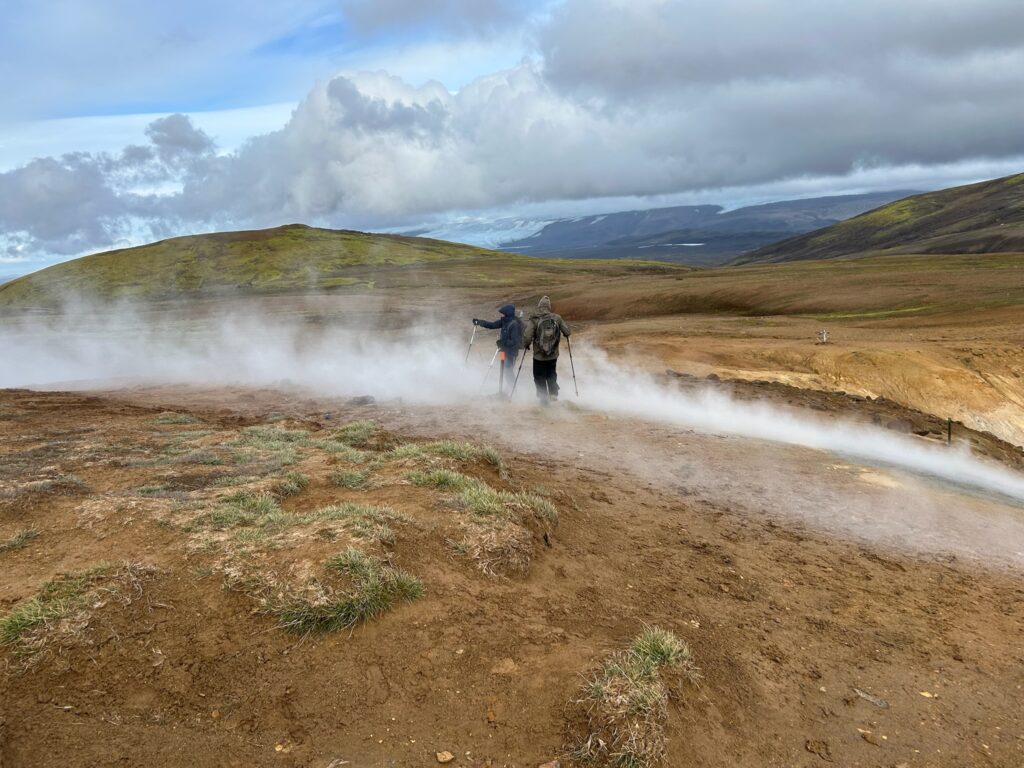Not so long ago the rich difference between two words — Tchoupitoulas and Kirkjulfell — would have been a mystery to me, but a brief frenzy of travel can change your life. Between February 2020 and mid-September of this year my wife and I had traveled only sparingly, and then only by car or bus. Before COVID we weren’t complete homebodies, but with the shutdown, our habits altered so radically that travel, especially by plane, seemed, like youthful vitality, gone for good.
Call it an intervention: a year ago our daughter called and said that she was taking us to Iceland. She and our son-in-law, recent empty-nesters, had just returned from 10 days of hiking there, and she wanted us to go back and hike with them us to celebrate our 80th birthdays. A year later we were on a plane crossing the North Atlantic, and as further proof that the intervention was working, we scheduled a second trip to New Orleans for three weeks after our return, this one to visit our oldest grandchild, a sophomore at Tulane.
Kirkjulfell, to return to my opening sentence, is the most-photographed mountain in Iceland. A “Game of Thrones” devotee visiting Iceland is likely to wonder, “Where have I seen that before?” Tchoupitoulas, easier to pronounce than you think if you ignore the “t”, is a street in New Orleans that runs parallel to the Mississippi River through the Warehouse District and right to the edge of the French Quarter. The Tchoupitoulas tribe (River People) lived along the riverbank before Europeans arrived.
New words are a small part of what travelers like me, ensconced in comfortable, measured lives, can learn by jumping into the cauldron of a new culture. The experience can be exciting and a little frightening, but mostly it is humbling in the sense that the world is big, and individual beings are small, like atoms. Naturally, we saw all we could and took hundreds of pictures, but it was the small discoveries that made both trips expansive and personal.
Iceland is a place to see churches, some so tiny that if it weren’t for the steeple, you might mistake them for rural schoolhouses. But on a hill in Reykjavik there is a majestic one called Hallgrimskirja, bearing the name not of a saint or martyr, but a 19th-century poet. In parks in New Orleans’s French Quarter, there are plaques that tell without slant the complicated colonial and racial history of the city, and in these parks where the rich and poor walk together, hustling musicians sing and play, hoping to make a few dollars.
On a bright Saturday in New Orleans we had prime seats for the Tulane football game against Army. The day before we had visited the National World War II Museum, a somber presentation of the human and material cost of that war and a reverent tribute to the intricate planning and inspired bravery that made victory possible. A day later it was Armed Service Appreciation Day in the stadium, and during the TV timeouts uniformed men and women were honored for their service. Whenever Army scored a touchdown, graying men in crisp uniforms and female Army cheerleaders celebrated side by side by doing pushups in the end zone.
Three weeks earlier and inside a crater with a surprise waterfall in the Thorsmork region of Iceland, I asked our guide about military service. He looked like someone who could do 100 pushups with a slab of basalt strapped to his back, and he said that Iceland was settled by people weary of the violence wrought by Vikings. Whether that was pure truth or cultural pride speaking (the Icelandic sagas are full of heroic violence), the truth is that Iceland has no military and never has. It was also the first sovereign nation in the world to elect a woman president.

September in Iceland is like November in Vermont. Every day we needed parkas, hats and gloves and sometimes an additional layer. One night in the Central Highland we had snow. October in New Orleans boomeranged us back to August, and a smarter traveler would have packed SPF 50 for the football game. Mornings were warm enough to eat breakfast at an outdoor café. Now back home in Vermont, I will come out of a reverie and wonder whether it’s the World Series I’m watching or the Super Bowl.
But how interesting it is to be confused this way, how refreshing to be be knocked out of one’s routine and imagine another way to live and another place to do it. I don’t want to romanticize either place, but wide-eyed views of Iceland and New Orleans (or of many other places) can be reminders of what really matters.
Both are vulnerable to threat that will never go away — flooding in one case, volcanic eruption in the other — but their people go to work every day and send their kids to school. What seems to be missing in these two places, at least to this visitor, is the doomsday gloom about everything (politics, the coming winter, aging, taxes, the cost of food) that settles around a life of routine.
I know better than to believe that these issues can be ignored, but mere anguish about them never helps, and disdain for people who don’t share one’s values is paralyzing and cynical. So I say, bring on winter! I’m ready with the right clothes. And as for those big issues… maybe now is a good time for a fresh look.
Jonathan Stableford is a retired educator. He lives in Strafford.

